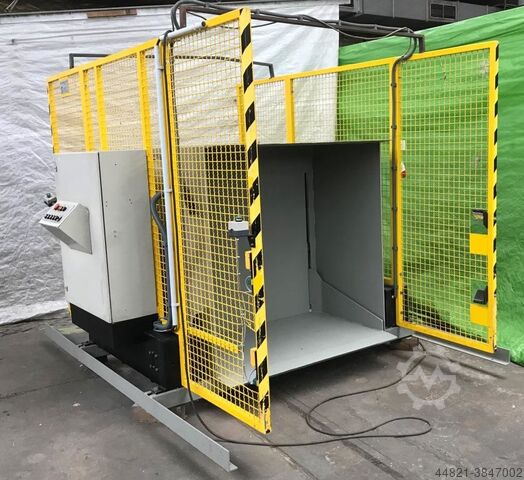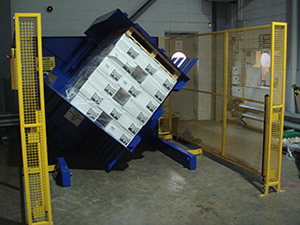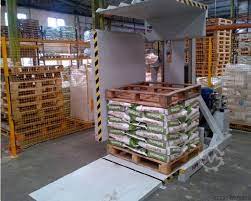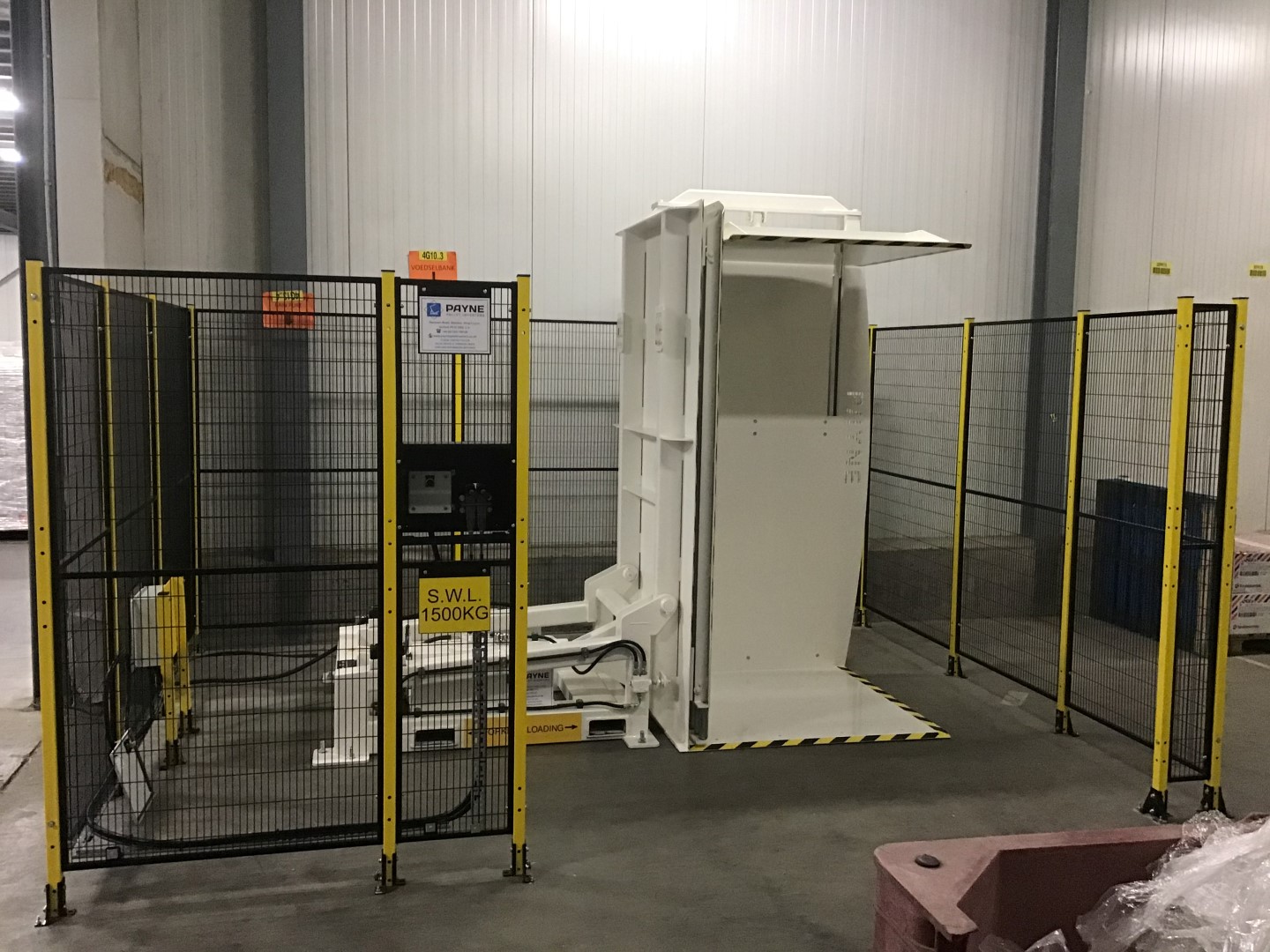Cutting Downtime in Malaysia: How Pallet Changing Machines Help
Your production line is humming along perfectly. Suddenly, everything grinds to a halt. The culprit? A single broken pallet, or a shipment that needs to be moved from wood to plastic pallets for export. This manual transfer is slow, risky, and a major source of hidden downtime. In a fast-paced market like Malaysia, these small delays are incredibly costly. Every minute your team spends manually restacking boxes is a minute they aren't fulfilling orders. This inefficiency chips away at your profit margins and your ability to meet tight deadlines. What if you could swap an entire pallet load in under 60 seconds, safely and automatically? This is precisely what pallet changing machines do, and they are a game-changer for cutting operational downtime.
Pallet changing machines, also known as pallet inverters or pallet exchangers, help cut downtime in Malaysian facilities by automating the entire process of transferring goods from one pallet to another. This automation eliminates slow and labor-intensive manual restacking. It also reduces the risk of product damage during the transfer. By quickly handling damaged pallets or swapping pallet types for shipping, these machines ensure a continuous and uninterrupted flow of operations.

This might sound like a simple fix, but its impact on your entire operation is huge. It’s not just about moving faster. It’s about creating a more efficient, safer, and smarter workflow. As an engineer who has spent decades on the factory floor, I’ve seen how these "small" improvements lead to massive gains. Let's break down exactly how these machines can transform your warehouse or production facility in Malaysia and help you reclaim lost time.
How Do Pallet Changers Directly Reduce Manual Handling Downtime?
A single broken wooden pallet arrives with your incoming goods. It can halt an entire production or shipping line. Your team has to stop their primary tasks. They must carefully unload every single box by hand. Then, they replace the broken pallet and re-stack everything. This is a common, frustrating, and time-consuming bottleneck. This manual process can easily take 30 minutes, or even longer, depending on the load's weight and stability. It's physically demanding work that increases the chance of worker injury. It also creates a high risk of damaging the products during the transfer. When this happens several times a day, you are looking at significant hours of lost productivity. A pallet changer completely automates this task. It securely clamps the load, rotates or tilts it, and allows you to swap the pallet in a fraction of the time. This gets your goods moving again almost instantly.
Pallet changers directly reduce manual handling downtime by replacing a slow, multi-step manual process with a single, fast, automated action. Instead of workers spending 20-30 minutes restacking goods, a machine can complete the entire pallet swap in about 60 seconds. This drastically minimizes operational pauses. It keeps your production and shipping lines moving at the pace they were designed for.

Dive Deeper: The True Cost of Manual Pallet Swapping
As a factory owner, you need to look at both direct and indirect costs. The direct cost of manual pallet swapping is the labor time you pay your team to do the work. The indirect costs, however, are often much higher. These include production line stoppages, missed shipping deadlines, the risk of product damage, and potential worker injuries. For a business leader like Javier Morales, whose goal is to achieve 95% equipment uptime, eliminating these hidden "time thieves" is critical. It's not just about the big machines; it's about optimizing every single step in the logistics chain.
Let's look at the process comparison. The difference is stark.
Manual vs. Automated Pallet Swapping
| Step | Manual Process | Automated Process with Pallet Changer |
|---|---|---|
| 1. Identification | A worker identifies a damaged or incorrect pallet. | A worker identifies a damaged or incorrect pallet. |
| 2. Staging | A forklift moves the load to a safe staging area. | A forklift takes the load directly to the pallet changer. |
| 3. Unloading | One or two workers manually unstack every box or bag. | The machine clamps the load securely. No manual touching. |
| 4. Pallet Swap | Workers remove the old pallet and position the new one. | The machine rotates or pushes the load onto the new pallet. |
| 5. Reloading | Workers manually restack every box or bag onto the new pallet. | The process is complete. The machine releases the load. |
| 6. Securing | The load may need to be re-wrapped with stretch film. | The load is ready for the forklift to take away. |
| Total Time | 20 - 40 minutes | 1 - 2 minutes |
| Product Damage Risk | High | Very Low |
| Worker Injury Risk | High (Back strain, repetitive motion) | Very Low |
In the context of Malaysia's bustling export economy, this efficiency is vital. Many countries have strict import regulations like ISPM 15, which requires heat-treated wooden pallets. Many companies now prefer to ship on plastic pallets to avoid any compliance issues. A pallet changer makes this switch from internal wooden pallets to export-ready plastic pallets a quick, seamless part of your workflow, not a major operational delay. Similarly, in industries like food and pharmaceuticals, maintaining hygiene is essential. Pallet changers allow you to easily transfer goods from a common wooden pallet to a sanitized plastic or aluminum pallet before they enter a cleanroom environment. This simple machine directly tackles downtime and makes your entire operation more agile.
What's the Real ROI of a Pallet Changing Machine in a High-Volume Facility?
As a business owner, you look at every equipment purchase through the lens of return on investment (ROI). A pallet changer might seem like a niche machine. You might wonder, how does it actually pay for itself and contribute to the bottom line? It's easy to dismiss the cost of "small" inefficiencies like manual pallet handling. But the combined costs of wasted labor, product damage, and operational delays add up to a significant drain on your profits. This is money that disappears from your business every single day. A pallet changing machine offers a clear, quantifiable ROI by attacking these hidden costs directly. The savings in labor, reduced product write-offs, and increased throughput can deliver a payback period that is often much shorter than you might expect.
The real ROI of a pallet changing machine in a high-volume facility comes from a combination of direct labor savings, reduced product damage costs, increased operational throughput, and improved worker safety. By automating a slow and risky task, the machine pays for itself by minimizing these tangible and intangible expenses, often resulting in a payback period of 12 to 24 months for a busy operation.

Dive Deeper: Calculating Your Payback Period
For a pragmatic leader like Javier, who aims to lower overall operating costs by 8%, every investment must be justified with data. A pallet changer isn't just an operational tool; it's a financial one. Let's build a simple framework to help you estimate the potential ROI for your own facility in Malaysia.
You can calculate your payback period by looking at four key areas of savings:
A Simple ROI Framework
| Savings Category | Calculation | Example (Hypothetical Malaysian Facility) |
|---|---|---|
| 1. Labor Savings | (Time Saved per Swap) x (Number of Swaps/Day) x (Labor Cost/Hour) x (Work Days/Year) | (0.4 hours) x (15 swaps/day) x (RM 15/hour) x (300 days) = RM 27,000 / year |
| 2. Product Damage Reduction | (Value of Goods Damaged Annually by Manual Handling) x (Estimated Reduction %) | (RM 20,000) x (90% reduction) = RM 18,000 / year |
| 3. Increased Throughput | (Value of Additional Shipments/Hour) x (Hours Saved/Year) | Let's be conservative and say this adds efficiency but we won't quantify it directly. Consider it a bonus. |
| 4. Injury Prevention | (Average Cost of a Lost-Time Injury) x (Likelihood Reduction) | This is hard to predict, but a single avoided injury can save over RM 10,000 in direct and indirect costs. |
| Total Annual Savings | RM 45,000 / year (or more) |
Note: The numbers above are illustrative. Your actual savings will depend on your volume, labor costs, and product value.
Let's break down the calculations. For Labor Savings, we assume a manual swap takes 25 minutes (0.4 hours) and a machine takes 1-2 minutes, saving nearly the full time. If your facility handles 15 pallet swaps a day due to damages or export requirements, the saved hours add up quickly. For Product Damage Reduction, think about how many boxes get dropped, crushed, or punctured during manual restacking. A pallet inverter holds the load securely, virtually eliminating this type of damage. Even a conservative estimate shows significant savings.
When you present these numbers, the investment in a pallet changer moves from being an "expense" to a "cost-reduction project." For a facility owner focused on hitting aggressive cost-saving targets, an investment that pays for itself in under two years while also improving safety and efficiency is a powerful strategic move.
Can Pallet Changers Improve Warehouse Safety and Compliance in Malaysia?
Warehouse safety is non-negotiable. Manual handling of heavy, unstable loads is one of the leading causes of workplace injuries, particularly back strains and repetitive stress injuries. These incidents lead to lost work time, potential legal issues, and a negative impact on team morale. An accident can not only harm your employee but also trigger investigations, fines from regulatory bodies, and lasting damage to your company's reputation. In Malaysia, compliance with the Occupational Safety and Health Act (OSHA) is strictly enforced, and companies have a legal responsibility to provide a safe working environment. Pallet changers fundamentally redesign a high-risk task to be inherently safer. By containing the load and using mechanical power, they eliminate the need for manual lifting and restacking. This drastically reduces the risk of musculoskeletal injuries and accidents from falling goods.
Yes, pallet changers significantly improve warehouse safety and compliance in Malaysia by removing the manual handling risks associated with swapping pallets. They prevent common injuries like back strain by automating the heavy lifting and restacking process. This helps businesses comply with Malaysian OSHA standards, creating a safer work environment and reducing the risk of accidents and their associated costs.

Dive Deeper: Building a Safer, Compliant Operation
A leader who has worked their way up from the factory floor, like Javier, understands that a company's greatest asset is its people. Protecting them is not just a matter of compliance; it's a matter of good leadership. Investing in safety is investing in your team. A pallet changer is a prime example of engineering a problem out of existence.
Here’s how it directly enhances safety and compliance:
-
Ergonomics and Injury Prevention: The primary safety benefit is the elimination of a physically strenuous task. Manual restacking involves repeated bending, lifting, and twisting, often with heavy objects. This is a classic recipe for musculoskeletal disorders (MSDs), which are among the most common and costly workplace injuries. A pallet changer does all the heavy work. The operator simply uses a control panel, removing the physical strain entirely.
-
Preventing Accidents from Falling Objects: When a pallet load is unstable, manually moving boxes is dangerous. A single wrong move can cause the entire stack to collapse, leading to serious injury. A pallet changer clamps the entire load with controlled pressure before it moves. The goods are secure throughout the entire process, whether it's a 90-degree tilt or a full 180-degree inversion.
-
Modern Safety Features: Today's pallet changing machines are built with safety as a priority. Standard features include:
- Safety Fencing: A physical barrier that prevents personnel from entering the machine's operational area while it's in motion.
- Light Curtains: An invisible barrier of infrared beams. If a person or object breaks the beam while the machine is active, it stops immediately.
- Dual-Hand Controls: Requiring the operator to use both hands to start a cycle, ensuring their hands are away from any moving parts.
- Emergency Stop Buttons: Easily accessible buttons that can halt all machine functions instantly.
By installing a machine with these features, you are not just making the process safer; you are demonstrating a clear commitment to safety standards. This is something that safety inspectors in Malaysia will recognize and approve of. It also boosts employee morale. When workers see that the company is investing in technology to make their jobs safer and easier, it builds trust and loyalty.
Beyond the Machine: What Support Should You Expect from a Pallet Changer Supplier?
You have analyzed the data, calculated the ROI, and decided that a pallet changer is the right choice for your operation. But buying the machine is only the first step. Choosing the wrong supplier can leave you with a piece of equipment that doesn't quite fit your workflow or, worse, leave you without support when you need it most. A machine breakdown without a reliable service partner can be even more frustrating and costly than the original downtime problem you were trying to solve. You could be left with an expensive piece of metal and the same old operational headaches. A true partner—not just a supplier—provides comprehensive support throughout the entire lifecycle of the machine. This includes helping you select the right model, ensuring a smooth installation, training your team, and offering reliable after-sales service to keep your operations running smoothly for years to come.
Beyond the machine itself, you should expect a pallet changer supplier to act as a strategic partner. This includes providing expert consultation to select the correct machine for your specific load and workflow. It means offering professional installation and on-site team training. Most importantly, it requires a guarantee of responsive after-sales support with readily available spare parts and technical assistance to minimize any potential downtime.

Dive Deeper: Choosing a Partner, Not Just a Product
From my experience building SHJLPACK, I know that our clients' success is our success. A machine is only as good as the support system behind it. For a discerning business owner like Javier, who seeks a strategic partner for the long term, the quality of the service is just as important as the quality of the hardware. When you are evaluating suppliers for a pallet changer in Malaysia or anywhere else, here are the critical support elements you should demand:
-
1. Expert Pre-Sale Consultation: A good supplier will not just try to sell you a standard model. They will act as a consultant. They should ask detailed questions about your operations. What is the weight and size of your typical loads? What are the dimensions of your pallets? What is your required throughput? What are the space constraints in your facility? At SHJLPACK, we start every conversation by listening, because the right solution must be based on a deep understanding of the client's unique challenges.
-
2. Customization Capability: Not all loads are simple boxes. You might be handling bags of cement, barrels of chemicals, or fragile electronics. A strategic partner should be able to offer customization. This could mean adjusting the clamping pressure for delicate goods, using stainless steel construction for food-grade or corrosive environments, or modifying the machine's footprint to fit into a tight space.
-
3. Professional Installation and Commissioning: The supplier's responsibility shouldn't end when the truck delivers the machine. A professional team should handle the installation, commissioning, and integration into your existing line. They need to ensure it works perfectly in your environment and that it communicates with any other automated systems if necessary.
-
4. Comprehensive Operator and Maintenance Training: The best machine is ineffective if your team doesn't know how to use it safely and efficiently. A good supplier will provide thorough on-site training for both operators and your in-house maintenance staff. This should cover daily operation, safety procedures, and basic preventive maintenance to ensure longevity and reliability.
-
5. Responsive After-Sales Service and Spare Parts: This is the most critical long-term factor. What happens if a sensor fails or you need a replacement part? You need a partner who responds quickly. Ask potential suppliers about their service response times, their technical support availability, and their policy on spare parts. A reliable partner will keep critical spare parts in stock and have a clear process for getting you the support you need to prevent prolonged downtime. This is the core of our "Total Solution" philosophy.
My Insight: An Engineer’s Perspective on True Efficiency
I started my career as an engineer on the factory floor. I wasn't the boss; I was the one trying to make the machines run better. Later, I founded my own factory. This journey, much like that of a leader such as Javier Morales who rose from a team leader to own a major steel mill, has given me a unique perspective. I understand what it's like to worry about production targets from the control room and what it feels like to deal with a breakdown on the shop floor.
This experience taught me a fundamental lesson: True operational efficiency isn’t just about the top speed of your main production line. It is about systematically eliminating all the small, hidden "time thieves" that drain your productivity.
I remember one afternoon in my early days as a factory manager. Our main wrapping machine was idle. A shipping truck was waiting at the loading dock, and the driver was getting impatient. The entire line was stopped. The reason? A 20-dollar wooden pallet had split under a ton of finished product. I watched my team spend nearly an hour manually unloading and restacking the entire load. In that moment, watching the clock tick and the costs add up, I realized that the "small" problems were actually the biggest ones. They were unpredictable, disruptive, and incredibly wasteful.
That day shaped my entire philosophy. It is why we named our company SHJLPACK and why our slogan is "TOTAL SOLUTION FOR WRAPPING MACHINE." A total solution doesn't just address the primary function; it addresses the entire workflow around it. A pallet changer is a perfect example of this. It doesn't make steel or package food, but it protects the efficiency of the entire process that does. Investing in a machine like this isn't an expense. It's a strategic move to plug a leak in your operational boat, allowing your main engines to push you forward at full speed.
Conclusion
Ultimately, cutting downtime in Malaysia with a pallet changer is about more than just speed. It is a strategic investment in operational efficiency, warehouse safety, and a more resilient supply chain.




